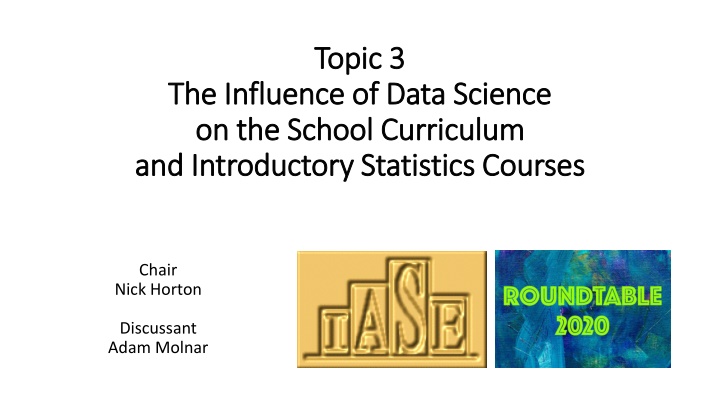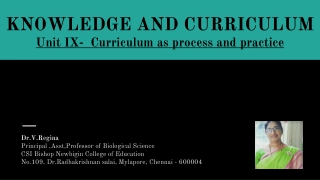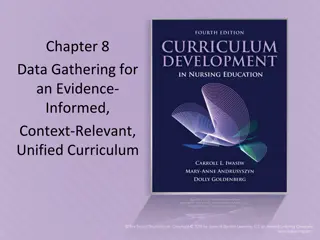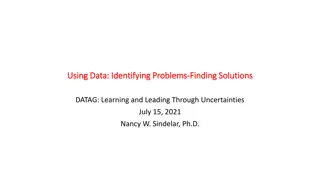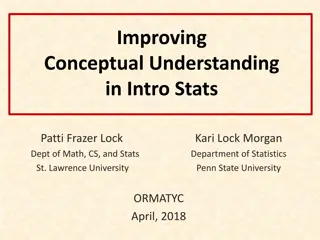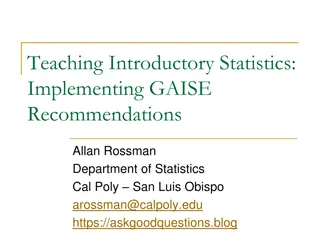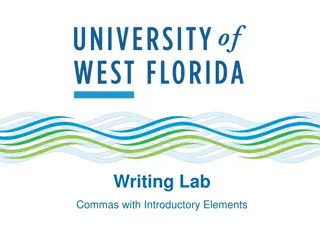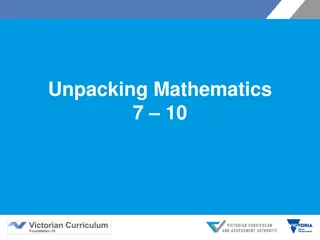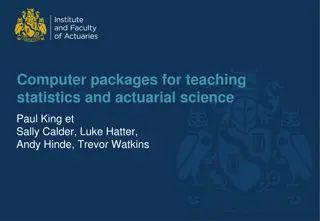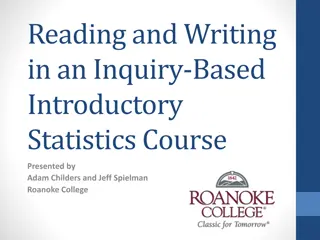Influence of Data Science on School Curriculum & Introductory Statistics
Data science's impact on school curricula & introductory statistics courses is explored, focusing on statistical reasoning development and integration of machine learning. The discussions cover various aspects such as data analysis, data collection, two cultures in data science, and building curriculum with a focus on data literacy and skills using tools like CODAP, Jupyter, and Python.
Download Presentation

Please find below an Image/Link to download the presentation.
The content on the website is provided AS IS for your information and personal use only. It may not be sold, licensed, or shared on other websites without obtaining consent from the author.If you encounter any issues during the download, it is possible that the publisher has removed the file from their server.
You are allowed to download the files provided on this website for personal or commercial use, subject to the condition that they are used lawfully. All files are the property of their respective owners.
The content on the website is provided AS IS for your information and personal use only. It may not be sold, licensed, or shared on other websites without obtaining consent from the author.
E N D
Presentation Transcript
Topic 3 Topic 3 The Influence of Data Science The Influence of Data Science on the School Curriculum on the School Curriculum and Introductory Statistics Courses and Introductory Statistics Courses Chair Nick Horton Discussant Adam Molnar
Top Down Top Down Statistical thinking for the era of big data and artificial intelligence: Toward understanding sustainability trends and issues for the future society (Orlando Gonz lez) International data science in schools project [idssp.org] (Neil Sheldon) Data science education in secondary school: How to develop statistical reasoning when exploring data using CODAP (Daniel Frischemeier) Data science education in secondary school: Teaching and learning decision trees with CODAP and Jupyter notebooks as an example of integrating machine learning into statistics education (Yannik Fleischer, Rolf Biehler) Bottom Up Bottom Up
Whats Different About Data Science? What s Different About Data Science? PPDAC (Wild & Pfannkuch, 1999) Problem Conclusion Plan Analysis Data
Starting from Existing Unstructured Data Starting from Existing Unstructured Data Relationships, correlations, and graphs lead to potential questions. Description before modeling, less na ve questions. Exploratory Data Analysis (Tukey, 1977) Data Conclusion Exploration Analysis Question
More About Data Collection More About Data Collection Sampling Data Management Data Harvesting Data Wrangling Problem Conclusion Gathering Analysis Exploration
The Two Cultures ( The Two Cultures (Breiman Breiman, 2001) , 2001) Inference Prediction Mathematics-based conclusions from a data model Accuracy on a test set from algorithmic methods Thought of as Statistics Thought of as Data Science
The REAL Two Cultures The REAL Two Cultures Mathematics Data Reality
Building Curriculum Building Curriculum Audience: Data Literacy, Data Skills, Data Science Technology: CODAP, Juypter, iNZight, Python, R Topics: Classification vs regression, Cost functions, Amount of math Helping students create questions and analyze results Evaluation of success?
